Publish Date (HKT) 2021-11-18
[FALSE] Does a video show Hong Kong-Zhuhai-Macau Bridge collapsed?
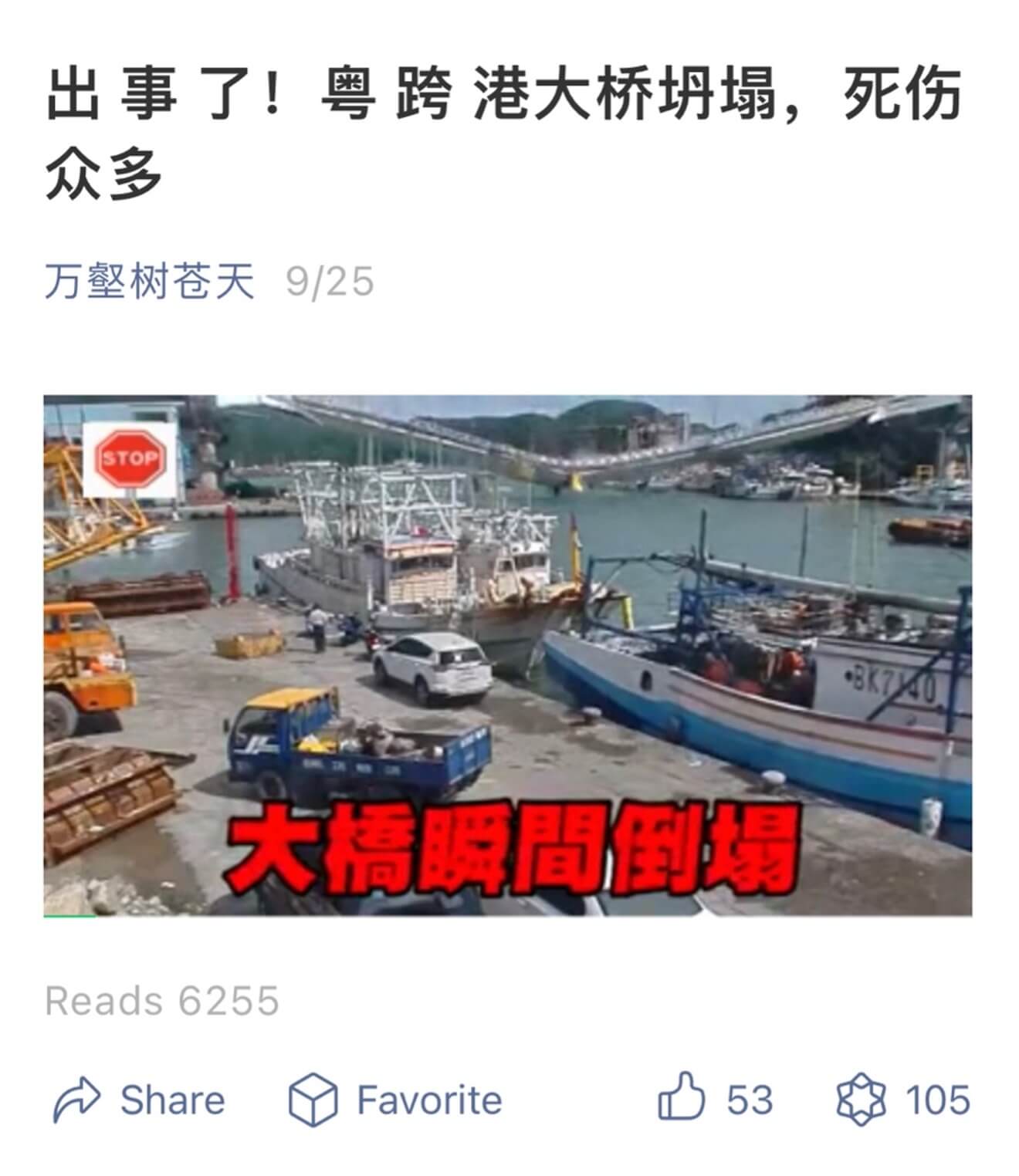
Screenshot of the WeChat video.
The Claim and Our Verdict
- The claim: A video was shared by a WeChat official account along with a claim that the Hong Kong-Zhuhai-Macau bridge collapsed.
- Fact-checking:
- The caption of the video, written in simplified Chinese, translates to “Alarming! Guangdong-Hong Kong Bridge collapsed, causing massive casualties.” The “Guangdong-Hong Kong Bridge” here refers to the Hong Kong-Zhuhai-Macao Bridge (HZMB). However, the subtitles in the video showed that the collapsed bridge was in fact the Nanfang’ao Bridge located in Yilan County, Taiwan. This incident occurred Oct. 1, 2019.
- The structural designs of the Nanfang’ao Bridge and Hong Kong-Zhuhai-Macao Bridge are different. The Nanfang’ao Bridge is a tied-arch bridge, corresponding to the bridge structure shown in the video. However, the HZMB consists of a series of three cable-stayed bridges, an undersea tunnel, and four artificial islands; this is considerably different from the bridge shown in the video. In addition, further keyword searches did not produce any media or official reports concerning the collapse of the HZMB.
- The claim fabricated a clickbait headline to draw the public’s attention and mislead them by stating that the HZMB collapsed.
- Our ruling: Therefore, we rate the claim as FALSE.
News Brief
A video was published Sept. 25, 2021 by a WeChat official account along with a claim that the Hong Kong-Zhuhai-Macau Bridge (HZMB) collapsed. The caption of the video, written in simplified Chinese, translates to, “Alarming! Guangdong-Hong Kong Bridge collapsed, causing massive casualties.” The “Guangdong-Hong Kong Bridge” here refers to the HZMB.
According to the registration information, this WeChat official account was registered Aug. 14, 2021, and it coins itself as “Ben’an Technology.” At the time of this report’s publication, the account has published 75 articles.
At the time of this report’s publication, the WeChat article had been read 6,255 times and had received 53 likes.
Fact-checking
At the video’s 12-second mark and 19-second mark, the subtitles show “Nanfang’ao Bridge” and “Yilan County” respectively.
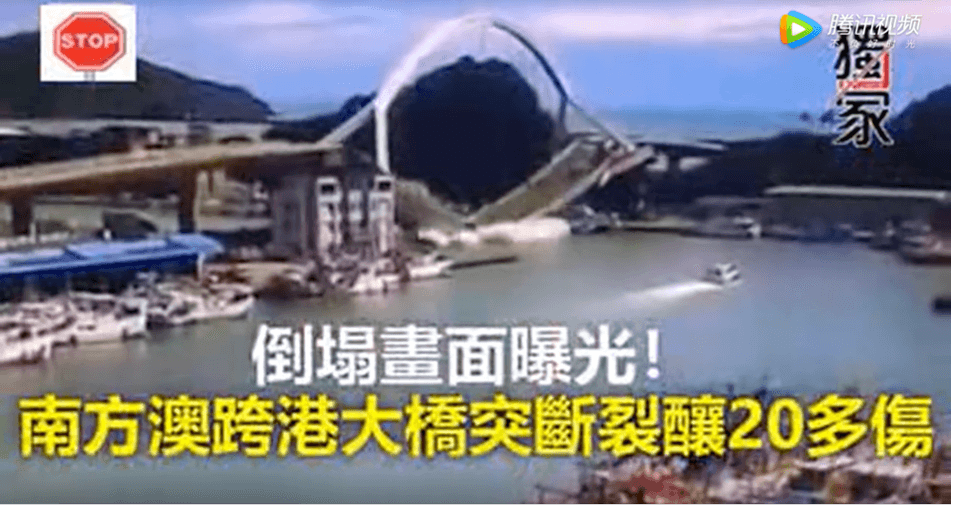
Screenshot of the video’s 12-second mark.
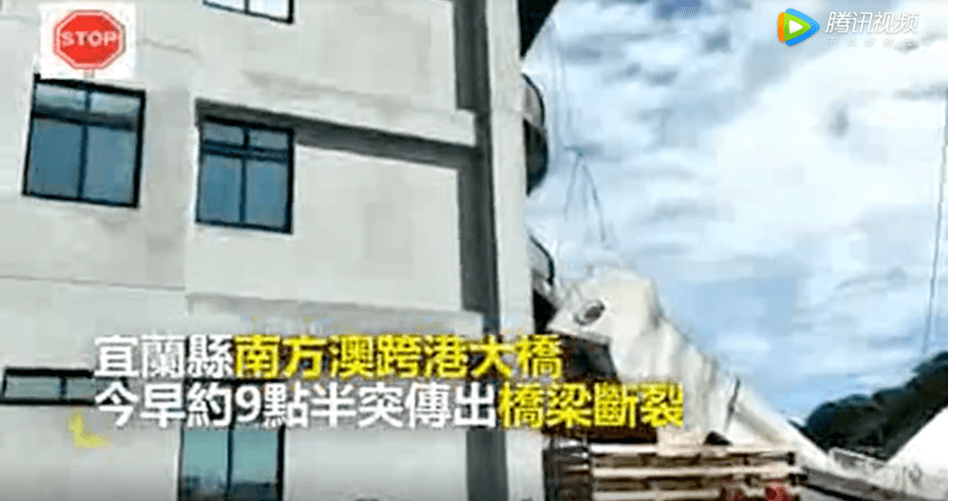
Screenshot of the video’s 19-second mark.
Keyword searches on “Nanfang’ao Bridge” and “Yilan County” found a news article published by Central News Agency, the government-owned news agency in Taiwan, and another published by udn.com, an online news media affiliated with the United Daily News Group in Taiwan. The Nanfang’ao Bridge is located in Nanfang’ao, a fishing harbor in northeastern Taiwan. Construction began in January 1996 and was completed in 1998. The bridge collapsed Oct. 1, 2019. It was reported that the collapse was due to corrosion of the supporting steel cables, lack of proper maintenance, and lack of reparation. Prior to the time of the incident, the bridge had not been inspected for over three years. Reconstruction began in July 2020 and is expected to be completed in 2022.
According to an article published by Science Monthly, a Taiwan popular science magazine, the Nanfang’ao Bridge is a tied-arch bridge, corresponding to the bridge structure shown in the video. However, the HZMB consists of three cable-stayed bridges, an undersea tunnel, and four artificial islands, according to its official website. This differs from the bridge shown in the video. Therefore, the two bridges are different in structural designs.
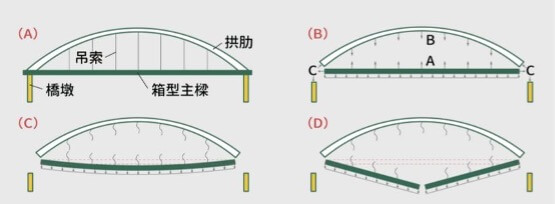
The diagrams of the Nanfang’ao Bridge structure and its collapse process.

Screenshots of the video discussed in the claim.
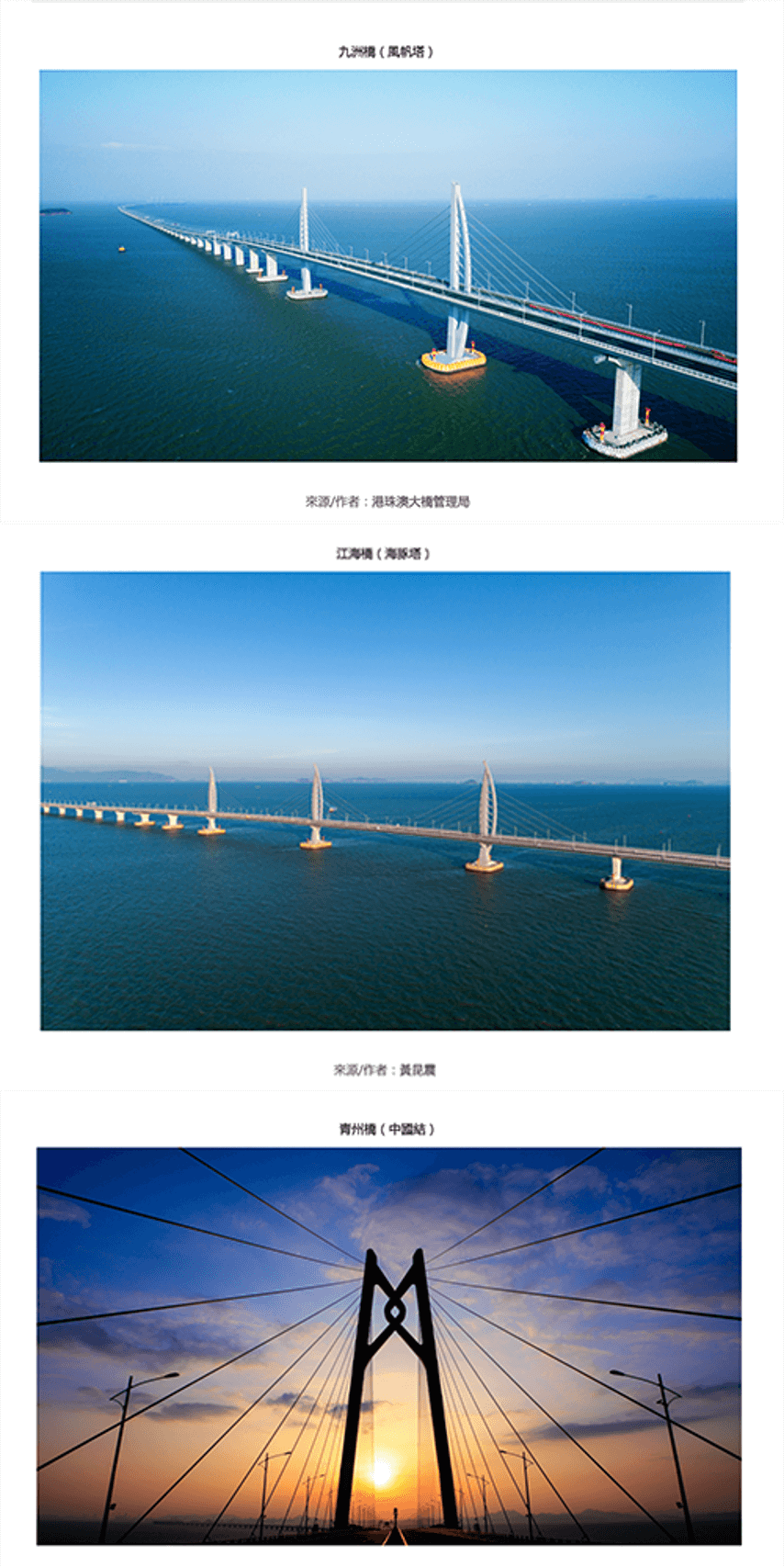
Photographs from the website of the HZMB.
Further keyword searches did not find any media or official reports concerning the collapse of the HZMB. Additionally, the HZMB bus is currently operating as per the usual schedule.
In addition, we discovered that similar rumors have been circulating online since June 7, 2020, including this one.
In regard to the manner in which WeChat articles were displayed to users, the author of the claim fabricated a clickbait headline to draw the public’s attention, mislead them, and cause them to believe that the HZMB collapsed.

Screenshot of the WeChat article.
Conclusion
Therefore, we rate the claim as FALSE.
References
- WeChat, article, Sept. 25, 2021.
- Central News Agency, “Nanfang’ao Bridge collapsed due to corrosion of the supporting steel cables and no inspection for more than three years,” Nov. 25, 2020.
- Udn.com, “Nanfang’ao Bridge is rusty and broken due to poor design. County government: submit it to judicial investigation,” Nov. 25, 2020.
- Udn.com, “The progress of reconstruction of the Nanfang’ao Bridge is exposed! Minister of Transport: open to traffic before October next year,” Sept. 4, 2021.
- Science Monthly, “Nanfang’ao Bridge collapsed: the structure of the tied-arch bridge and the cause of the collapse,” Nov. 23, 2019.
- The official website of the Hong Kong-Zhuhai-Macao Bridge, the introduction of the HZMB program.
- HZMB bus, ticketing service.
- Duxuan website, “The collapse of the Hong Kong-Zhuhai-Macao Bridge in 2019,” June 7, 2020.












 :
:  : 3411 7375
: 3411 7375 :
: